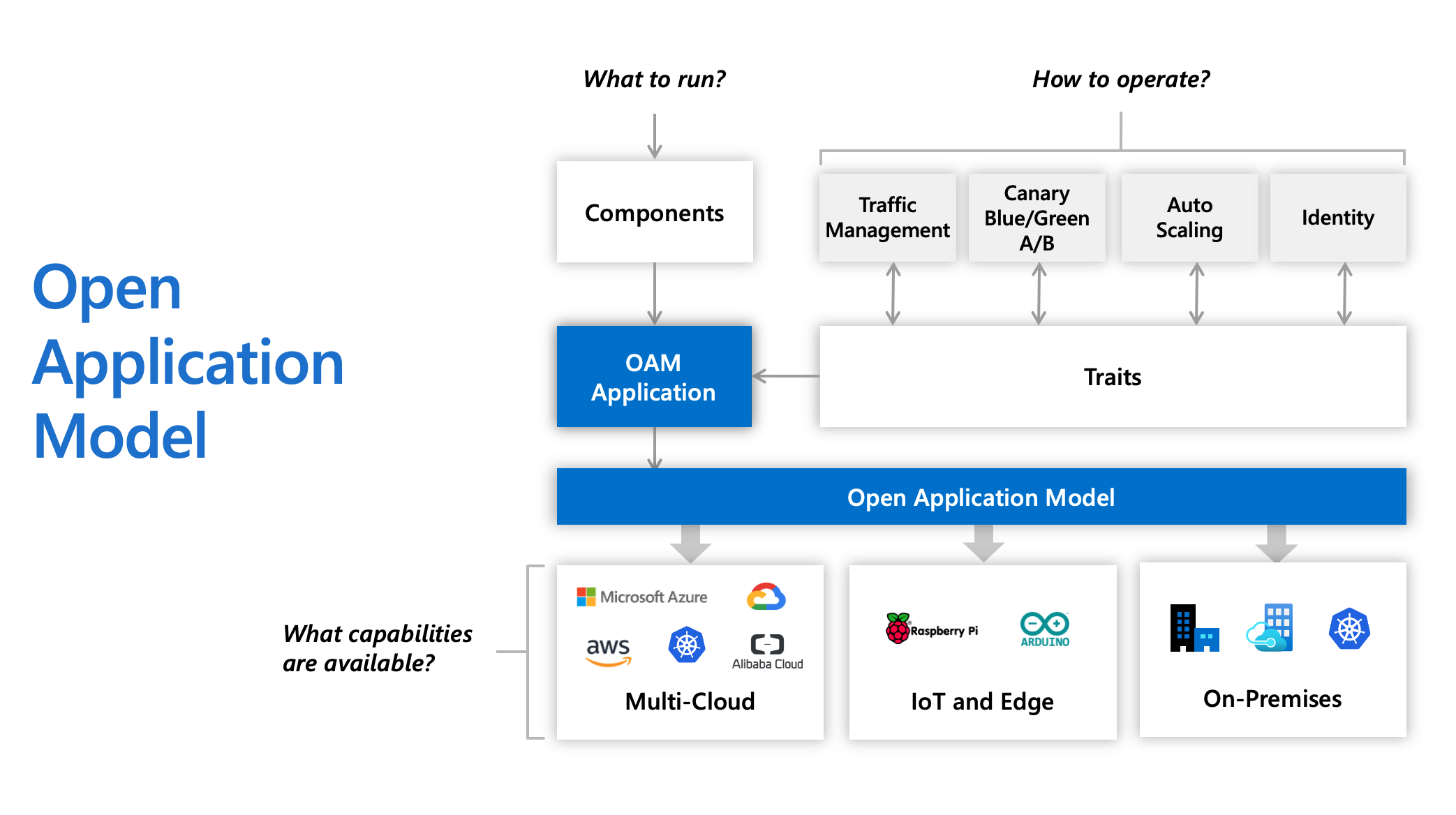Open Application Model (OAM) is a runtime-agnostic specification for defining cloud native applications.
Focused on application rather than container or orchestrator, Open Application Model brings modular, extensible, and portable design for modeling cloud native applications and enable delivering applications to any runtimes like Kubernetes, cloud, or IoT devices in a unified approach.
"Developers think in terms of application architecture, not of infrastructure."
Open Application Model defines a series of standard yet extensible specifications to model micro-service applications, with operational behaviors as part of the application definition. This enables unified application delivery across hybrid environments and naturally bring app-centric mindset to users of your platform.
Delivering applications without application context is hard:
- Developers spend time on infrastructure details instead of applications - ingress, labels, DNS, etc, and learning how the infrastructure is implemented.
- Restricted abstractions and capabilities - in-house APIs with opinionated abstractions have to be introduced, lack of interoperability across different components.
- Runtime lock-in - platform is tightly coupled with execution runtime, which heavily impact on how you configure, develop and operate your application.
In Open Application Model, we propose an app-centric approach instead:
- Application first - define the application a self-contained model, where operational behaviors as part of app definition, free of infrastructure here.
- Clarity and extensibility - an open standard to modularize your platform capabilities into reusable pieces, with full freedom to define or bring your own abstractions.
- Runtime agnostic - a consistent experience to deploy and operate your apps across on-prem clusters, cloud providers or even edge devices.
Open Application Model proposed a clear separation of concerns between different roles in application delivery lifecycle. For more details, see introduction.md.
| Last Stable Release | Latest Release | Working Draft | |
|---|---|---|---|
| Core Specification: | |||
| OAM Specification | v0.1.0 | v0.2.1 | v0.2.2-WD |
For v0.2.x releases (recommend version):
- KubeVela: the highly extensible application platform based on Kubernetes and OAM.
For v0.1.x releases:
- Rudr: the reference implementation of OAM on Kubernetes.
To get an overview of the milestones and their description please visit the Milestones page.
Triaging of items into milestones will occur during the bi-weekly community call. During this call, issues might be brought into milestones, removed from milestones or moved between milestones.
Open Application Model specification is created under the Open Web Foundation (OWF), a neutral home for community-driven specifications.
See the CONTRIBUTING guide for more information about submitting changes to the spec.
One of the easiest ways to contribute is to participate in discussions. There are several ways to get involved.
| Item | Value |
|---|---|
| Mailing List | https://groups.google.com/forum/#!forum/oam-dev |
| Community meeting info | Bi-weekly, Tuesdays 10:30AM PST |
| Meeting link | OAM Community Call |
| APAC Friendly Community meeting | Bi-weekly APAC, Tuesdays 19:00PM GMT+8 |
| Meeting link APAC Friendly meeting | OAM Community Call |
| Meeting notes | Notes and agenda |
| Meeting recordings | OAM YouTue Channel |
| IM Channel | https://gitter.im/oam-dev/ |
| @oam_dev |


